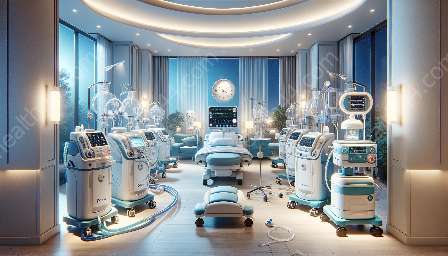Nebulizers are essential respiratory care devices designed to deliver medication in the form of a mist to the lungs. They are a crucial component of medical devices & equipment used in the treatment of respiratory conditions. In this guide, we will explore the benefits, types, and uses of nebulizers, and their compatibility with other respiratory care devices and medical equipment.
Understanding Nebulizers
Nebulizers are medical devices that convert liquid medication into a fine mist that can be inhaled directly into the lungs. They are particularly useful for individuals who have difficulty using inhalers or require large doses of medication. Nebulizers are commonly used to treat respiratory conditions such as asthma, chronic obstructive pulmonary disease (COPD), cystic fibrosis, and other respiratory illnesses.
Types of Nebulizers
There are several types of nebulizers, including jet nebulizers, ultrasonic nebulizers, and mesh nebulizers. Jet nebulizers utilize compressed air to create a mist from the medication, while ultrasonic nebulizers use high-frequency vibrations to generate the mist. Mesh nebulizers, on the other hand, utilize a vibrating mesh to produce fine droplets of medication.
Benefits of Nebulizers
Nebulizers offer numerous benefits, including the ability to deliver medication directly to the lungs, making them effective in providing quick relief for respiratory symptoms. They are also suitable for use in all age groups, from infants to the elderly, and can be used with a variety of medications, including bronchodilators, corticosteroids, and antibiotics.
Compatibility with Respiratory Care Devices
Nebulizers are an integral part of respiratory care devices and work in conjunction with other equipment such as oxygen concentrators, CPAP machines, and spirometers. When used in combination with these devices, nebulizers help in delivering the medication effectively and efficiently, ensuring optimal respiratory care for patients.
Benefits of Compatibility
By being compatible with respiratory care devices, nebulizers contribute to a holistic approach to managing respiratory conditions. They enable healthcare providers to tailor treatment plans to individual patient needs and ensure that the delivery of medication is precise and targeted, thereby optimizing the therapeutic effects of the medication.
Medical Devices & Equipment
Nebulizers are classified as medical devices and are an essential component of medical equipment used in respiratory care. They are regulated by health authorities to ensure their safety and effectiveness in delivering medication to patients with respiratory conditions. In addition to nebulizers, medical devices & equipment in the respiratory care category include oxygen therapy equipment, airway management devices, and respiratory monitoring devices.
Integration with Medical Facilities
Medical devices & equipment, including nebulizers, are integrated into healthcare facilities to support the diagnosis, treatment, and management of respiratory disorders. Integrating nebulizers with medical facilities ensures that patients have access to the necessary equipment and expertise required for optimal respiratory care.
Technological Advances
The field of medical devices & equipment, including nebulizers, is continuously advancing, with innovative technologies improving the effectiveness and efficiency of respiratory care. Technological advances in nebulizers have led to the development of portable, lightweight devices that offer greater convenience and flexibility for patients, enhancing their ability to manage their respiratory conditions effectively.
Conclusion
Nebulizers play a vital role in the treatment of respiratory conditions and are an essential part of respiratory care devices and medical devices & equipment. Understanding the benefits, types, and compatibility of nebulizers with other respiratory care devices and medical equipment is crucial for healthcare providers, patients, and caregivers to ensure optimal respiratory care and management of respiratory conditions.


